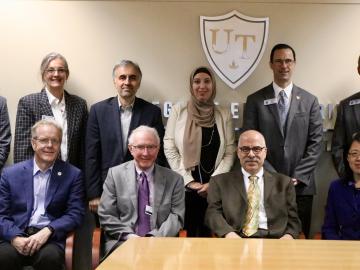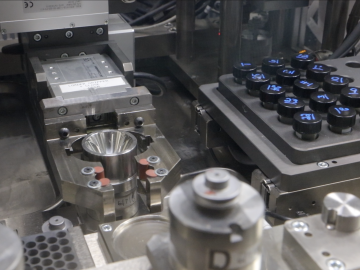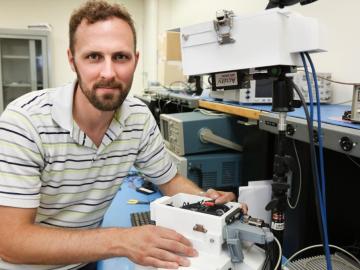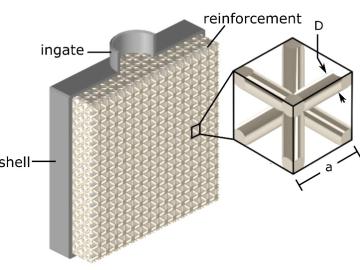
Filter News
Area of Research
- (-) Energy Science (47)
- (-) Nuclear Science and Technology (17)
- Advanced Manufacturing (5)
- Biology and Environment (44)
- Biology and Soft Matter (1)
- Computational Engineering (1)
- Computer Science (1)
- Electricity and Smart Grid (1)
- Functional Materials for Energy (1)
- Fusion and Fission (26)
- Fusion Energy (15)
- Isotope Development and Production (1)
- Isotopes (27)
- Materials (36)
- Materials for Computing (3)
- Mathematics (1)
- National Security (23)
- Neutron Science (7)
- Quantum information Science (2)
- Supercomputing (51)
News Topics
- (-) Composites (17)
- (-) Cybersecurity (9)
- (-) Frontier (2)
- (-) Fusion (9)
- (-) Isotopes (6)
- (-) Space Exploration (7)
- 3-D Printing/Advanced Manufacturing (82)
- Advanced Reactors (15)
- Artificial Intelligence (8)
- Big Data (5)
- Bioenergy (26)
- Biology (11)
- Biomedical (8)
- Biotechnology (4)
- Buildings (38)
- Chemical Sciences (14)
- Clean Water (8)
- Computer Science (27)
- Coronavirus (13)
- Critical Materials (9)
- Energy Storage (71)
- Environment (54)
- Exascale Computing (2)
- Fossil Energy (2)
- Grid (39)
- High-Performance Computing (6)
- Hydropower (3)
- Machine Learning (7)
- Materials (35)
- Materials Science (29)
- Mathematics (2)
- Mercury (3)
- Microelectronics (1)
- Microscopy (8)
- Molten Salt (5)
- Nanotechnology (8)
- National Security (5)
- Neutron Science (15)
- Nuclear Energy (41)
- Partnerships (12)
- Physics (3)
- Polymers (11)
- Quantum Science (2)
- Security (6)
- Simulation (4)
- Statistics (1)
- Summit (4)
- Transportation (66)
Media Contacts

Researchers at the Department of Energy’s Oak Ridge National Laboratory have received five 2019 R&D 100 Awards, increasing the lab’s total to 221 since the award’s inception in 1963.

ORNL and The University of Toledo have entered into a memorandum of understanding for collaborative research.

A team including Oak Ridge National Laboratory and University of Tennessee researchers demonstrated a novel 3D printing approach called Z-pinning that can increase the material’s strength and toughness by more than three and a half times compared to conventional additive manufacturing processes.

By automating the production of neptunium oxide-aluminum pellets, Oak Ridge National Laboratory scientists have eliminated a key bottleneck when producing plutonium-238 used by NASA to fuel deep space exploration.

As leader of the RF, Communications, and Cyber-Physical Security Group at Oak Ridge National Laboratory, Kerekes heads an accelerated lab-directed research program to build virtual models of critical infrastructure systems like the power grid that can be used to develop ways to detect and repel cyber-intrusion and to make the network resilient when disruption occurs.

A tiny vial of gray powder produced at the Department of Energy’s Oak Ridge National Laboratory is the backbone of a new experiment to study the intense magnetic fields created in nuclear collisions.

The Department of Energy’s Oak Ridge National Laboratory is now producing actinium-227 (Ac-227) to meet projected demand for a highly effective cancer drug through a 10-year contract between the U.S. DOE Isotope Program and Bayer.
For the past six years, some 140 scientists from five institutions have traveled to the Arctic Circle and beyond to gather field data as part of the Department of Energy-sponsored NGEE Arctic project. This article gives insight into how scientists gather the measurements that inform t...

Last November a team of students and educators from Robertsville Middle School in Oak Ridge and scientists from Oak Ridge National Laboratory submitted a proposal to NASA for their Cube Satellite Launch Initiative in hopes of sending a student-designed nanosatellite named RamSat into...

A new manufacturing method created by Oak Ridge National Laboratory and Rice University combines 3D printing with traditional casting to produce damage-tolerant components composed of multiple materials. Composite components made by pouring an aluminum alloy over a printed steel lattice showed an order of magnitude greater damage tolerance than aluminum alone.


